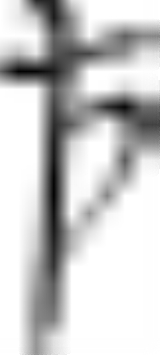
That
Encyclopedia
The word that is used in the English language
for several grammatical
purposes:
In the Old English language
that was spelled þæt. It was also abbreviated as a letter Thorn, þ, with the ascender crossed, ꝥ ( ). In Middle English
). In Middle English
the letter Ash, æ
, was replaced with the letter a, so that that was spelled þat, or sometimes þet. The ascender of the þ was reduced (making it similar to the Old English letter Wynn
), which necessitated writing a small t above the letter to abbreviate the word that ( ). In later Middle English
). In later Middle English
and Early Modern English
the þ evolved into a y shape, so that the word was spelled yat (although the spelling with a th replacing the þ was starting to become more popular) and the abbreviation for that was a y with a small t above it ( ). This abbreviation can still be seen in reprints of the 1611 edition of the King James Version of the Bible
). This abbreviation can still be seen in reprints of the 1611 edition of the King James Version of the Bible
in places such as 2 Corinthians 13:7.
English language
English is a West Germanic language that arose in the Anglo-Saxon kingdoms of England and spread into what was to become south-east Scotland under the influence of the Anglian medieval kingdom of Northumbria...
for several grammatical
Grammar
In linguistics, grammar is the set of structural rules that govern the composition of clauses, phrases, and words in any given natural language. The term refers also to the study of such rules, and this field includes morphology, syntax, and phonology, often complemented by phonetics, semantics,...
purposes:
- to introduce a restrictive relative clauseRestrictivenessIn semantics, a modifier is said to be restrictive if it restricts the reference of its head. For example, in "the red car is fancier than the blue one", red and blue are restrictive, because they restrict which cars car and one are referring to...
("She took the test that was hard.") - as a demonstrative pronoun ("That was hard.")
- as a demonstrative adjective ("That test was hard.")
- as a complementizerComplementizerIn linguistics , a complementizer is a syntactic category roughly equivalent to the term subordinating conjunction in traditional grammar. For example, the word that is generally called a complementizer in English sentences like Mary believes that it is raining...
/subordinating conjunction. ("He asked that she go.") - as an adverbAdverbAn adverb is a part of speech that modifies verbs or any part of speech other than a noun . Adverbs can modify verbs, adjectives , clauses, sentences, and other adverbs....
("The test wasn't that bad.")
In the Old English language
Old English language
Old English or Anglo-Saxon is an early form of the English language that was spoken and written by the Anglo-Saxons and their descendants in parts of what are now England and southeastern Scotland between at least the mid-5th century and the mid-12th century...
that was spelled þæt. It was also abbreviated as a letter Thorn, þ, with the ascender crossed, ꝥ (
 ). In Middle English
). In Middle EnglishMiddle English
Middle English is the stage in the history of the English language during the High and Late Middle Ages, or roughly during the four centuries between the late 11th and the late 15th century....
the letter Ash, æ
Æ
Æ is a grapheme formed from the letters a and e. Originally a ligature representing a Latin diphthong, it has been promoted to the full status of a letter in the alphabets of some languages, including Danish, Faroese, Norwegian and Icelandic...
, was replaced with the letter a, so that that was spelled þat, or sometimes þet. The ascender of the þ was reduced (making it similar to the Old English letter Wynn
Wynn
Wynn is a letter of the Old English alphabet, where it is used to represent the sound ....
), which necessitated writing a small t above the letter to abbreviate the word that (
 ). In later Middle English
). In later Middle EnglishMiddle English
Middle English is the stage in the history of the English language during the High and Late Middle Ages, or roughly during the four centuries between the late 11th and the late 15th century....
and Early Modern English
Early Modern English
Early Modern English is the stage of the English language used from about the end of the Middle English period to 1650. Thus, the first edition of the King James Bible and the works of William Shakespeare both belong to the late phase of Early Modern English...
the þ evolved into a y shape, so that the word was spelled yat (although the spelling with a th replacing the þ was starting to become more popular) and the abbreviation for that was a y with a small t above it (
 ). This abbreviation can still be seen in reprints of the 1611 edition of the King James Version of the Bible
). This abbreviation can still be seen in reprints of the 1611 edition of the King James Version of the BibleKing James Version of the Bible
The Authorized Version, commonly known as the King James Version, King James Bible or KJV, is an English translation of the Christian Bible by the Church of England begun in 1604 and completed in 1611...
in places such as 2 Corinthians 13:7.

